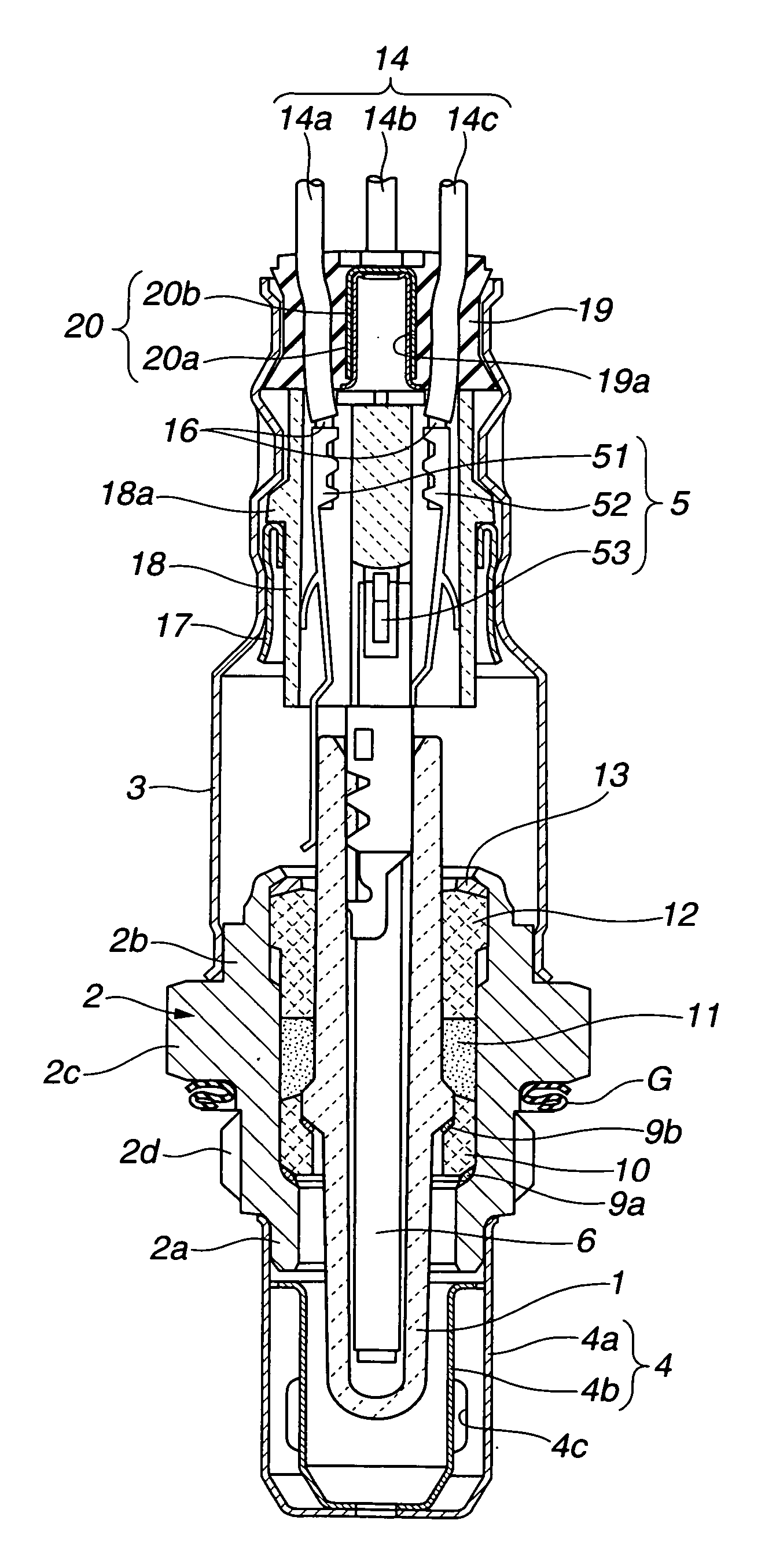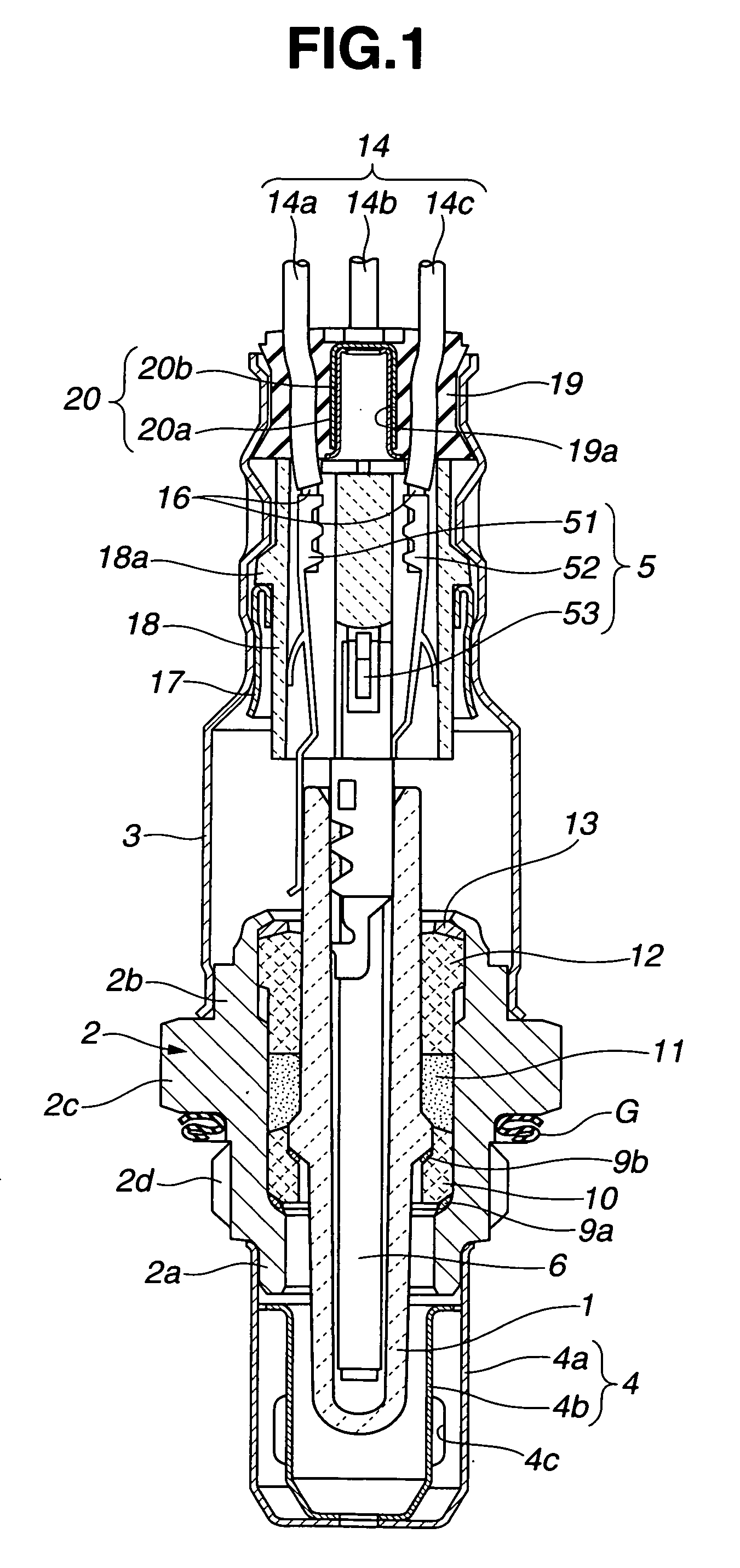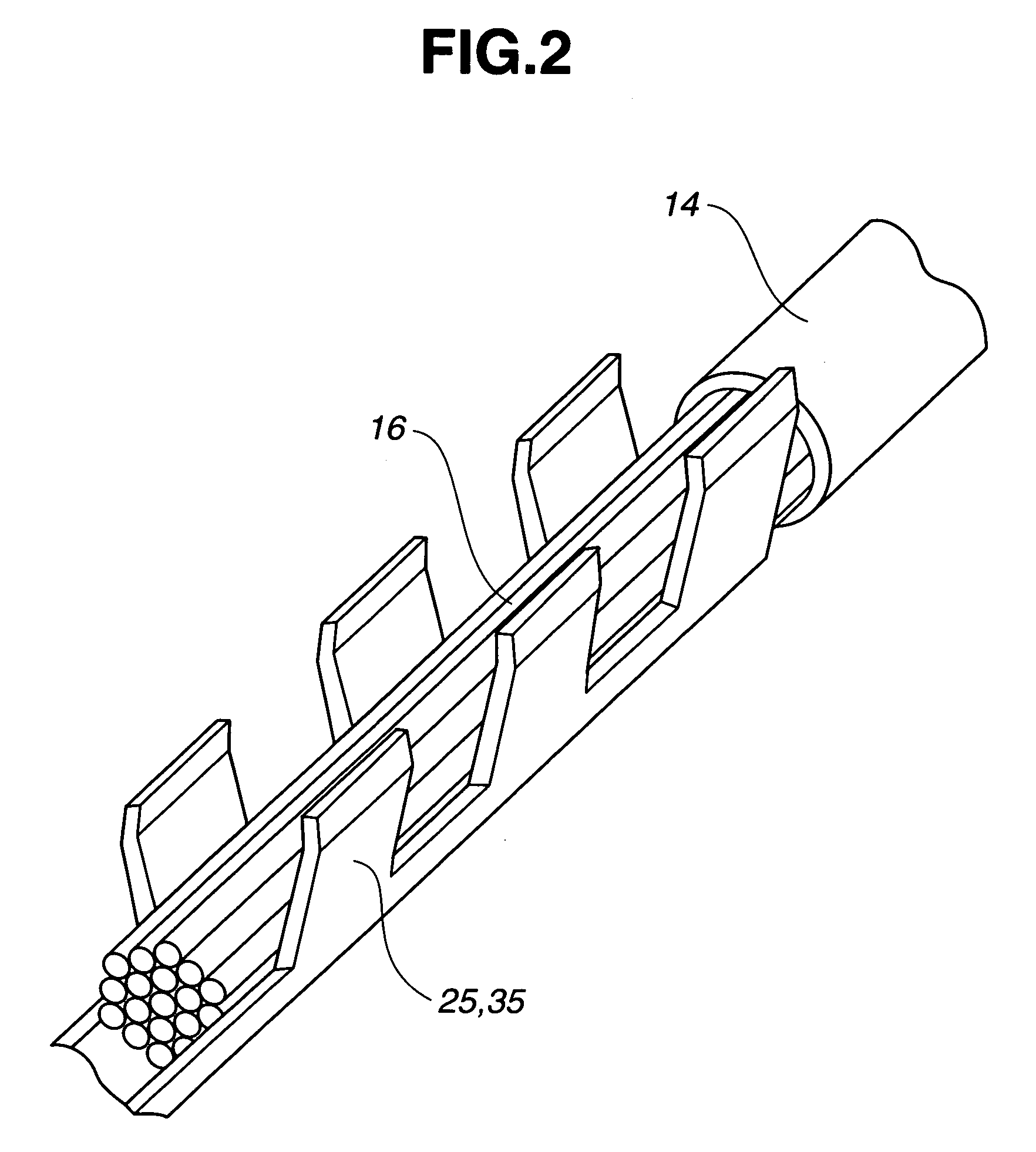Crimp contact and gas sensor
a technology of crimp contact and gas sensor, which is applied in the direction of instruments, chemical methods analysis, material analysis, etc., can solve the problems of gas sensor with such a conventional crimp contact not being able to secure accurate signal output, and not being able to hold lead core wires sufficiently tightly, so as to prevent or minimize a widening of clearance, avoid an increase in electrical resistance, and secure accurate signal output over a long period of time
- Summary
- Abstract
- Description
- Claims
- Application Information
AI Technical Summary
Benefits of technology
Problems solved by technology
Method used
Image
Examples
example 1
[0050] Test samples of crimp contacts 5 of the first embodiment were prepared, each of which had three wire hold portions 5a crimped onto nineteen lead core wires 16 as shown in FIG. 5. The wire hold portions 5a were herein made of Inconel. The lead core wires 16 were made of pure copper and had a diameter of 0.2 mm before the crimping process. The crimping process was performed using an anvil 22 and a crimper 24 as shown in FIG. 4 without the application of a lubricant. Each of the completed wire hold portions 5a had a bottom wall 5b and side walls 5c, with top ends 5d of the respective side walls 5c turned toward the bottom wall 5b and outer surfaces 5e of the respective side wall ends 5d brought in contact with each other, to enclose the lead core wires 16 in a wire accommodation space 5f as shown in FIG. 6.
[0051] For cross section observation of the wire hold portion 5a, one of the test samples of the crimp contacts 5 was cut at a joint between the wire hold portion 5a and the ...
example 2
[0055] Test samples of crimp contacts 5 of the second embodiment were prepared, each of which had three wire hold portions 5a crimped onto nineteen lead core wires 16 as shown in FIG. 5. The wire hold portions 5a were made of Inconel. The lead core wires 16 were made of pure copper and had a diameter of 0.2 mm before the crimping process. The crimping process was performed using an anvil 22 and a crimper 24 as shown in FIG. 4 without the application of a lubricant. Each of the completed wire hold portions 5a had a bottom wall 5b and side walls 5c, with top ends 50c and 51c of the respective side walls 5c turned toward the bottom wall 5b and an end face 51g of the side wall end 51c brought in contact with an outer surface 50e of the side wall end 50c, to enclose the lead core wires 16 in a wire accommodation space 5f as shown in FIG. 7.
[0056] One of the test samples of the crimp contacts 5 was cut at a joint between the wire hold portion 5a and the lead core wires 16 along a directi...
PUM
 Login to View More
Login to View More Abstract
Description
Claims
Application Information
 Login to View More
Login to View More - R&D
- Intellectual Property
- Life Sciences
- Materials
- Tech Scout
- Unparalleled Data Quality
- Higher Quality Content
- 60% Fewer Hallucinations
Browse by: Latest US Patents, China's latest patents, Technical Efficacy Thesaurus, Application Domain, Technology Topic, Popular Technical Reports.
© 2025 PatSnap. All rights reserved.Legal|Privacy policy|Modern Slavery Act Transparency Statement|Sitemap|About US| Contact US: help@patsnap.com



